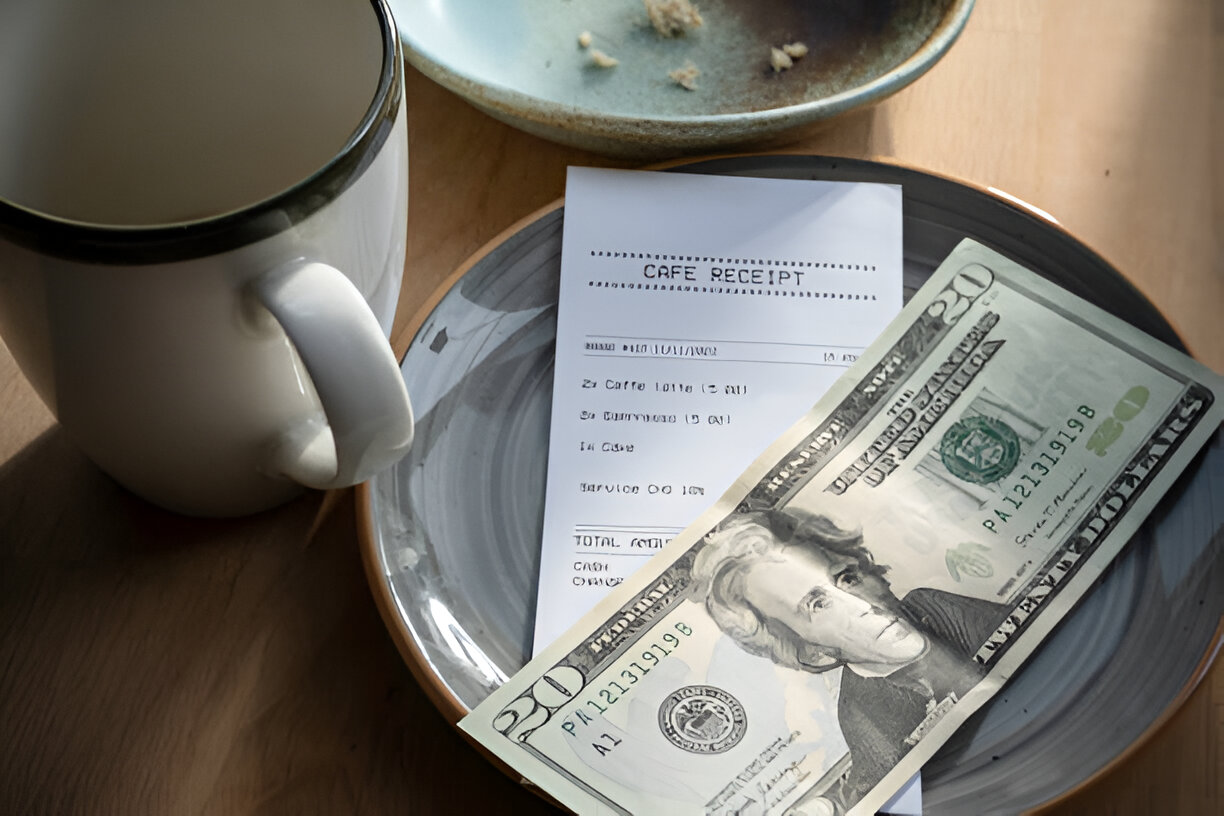By Izzy Kharasch.
Sometimes you tip at a restaurant, sometimes you give a gratuity and more and more you’re paying a service charge. What happens to that money? All of those may equal 20 percent, but how much goes to the server depends on which one you are paying.
How Much of Your Tip Does the Server Get?
My bill is $300 and I like to tip 20 percent, which means I am giving the server $60. As the guest, I’m assuming that if I tip a server $60, that is what they take home. That is not the case.
First, the server will tip out the bus person 5 percent ($3) because the busser works for and supports the server. Next, the server will tip out the bartender 10 percent of the alcohol sales. If $100 out of the $300 bill was alcohol, the server will pay the bartender $10. Many restaurants also tip out the runner 2.5 percent ($1.50). The server also must claim taxes, typically 10 percent ($6).
So, from the $60 tip, the server gets to keep $39.50.
A Tip Is a Tip, But a Gratuity Is…
Most often we see an automatic gratuity placed on parties of six or more. One question that guests often have is “Do I have to pay the automatic gratuity?” The short answer is yes, as long as the restaurant states this publicly (on the menu or at the host stand) and you know about it in advance.
This system was developed because often large parties split checks. Let’s say you and your spouse go out with two other couples, enjoy dinner and get the check. Each couple gives a credit card meaning the bill is now split three ways. Prior to the gratuity minimum, everyone tipped a different amount. Going back to our $300 example, the guests might tip an average of 15 percent, or $45, leaving the server $27.05 after they pay out their own tips and taxes.
Restaurants developed this system to make it simple for every guest to know exactly the minimum amount to leave as a gratuity.
So What Is a Service Charge?
Service charges are becoming increasingly common, and if you think it’s the same as a tip you could not be more wrong. Not long ago I wrote an article about service charges and why you need to review your bill very closely.
Here is the biggest difference between a tip, automatic gratuity and a service charge: The restaurant owners are 100 percent in charge of how the service charge will be distributed! Also, the restaurant determines what the service charge is. Your bill could have service charges of 10 percent or more over and above the tip. The bill might say “service charge of 10 percent supports staff health and wellness.”
Let’s go back to our $300 bill and the $60 tip we left. Since the restaurant has a mandatory 10 percent service charge, you have to ask yourself: Will I still leave the server 20 percent? Remember the tip is discretionary. If you leave the server 20 percent and pay an additional 10 percent, your tip plus service charge equals $90.
What I am finding is that most people are still leaving 20 percent, which means the server is getting 10 percent as their tip, or $30. After tipping out and taxes, their take home pay will be $14.75 vs. the $39.50 when the entire tip went to them. Whether the server sees any benefit from service charges is strictly up to the restaurant owner’s discretion.
Most states have removed the “tipped” minimum wage and now servers make substantially more per hour than just five years ago. Tipping will look very different in the next 10 years as wages change and restaurant owners exert more control over their income with service charges.
====
Izzy Kharash is a restaurant consultant and founder of www.HospitalityWorks.com He offers a free phone consultation to your restaurant, retail and hospitality clients. Contact Izzy@hospitalityworks.com
Thanks for reading CPA Practice Advisor!
Subscribe Already registered? Log In
Need more information? Read the FAQs
Tags: Payroll




